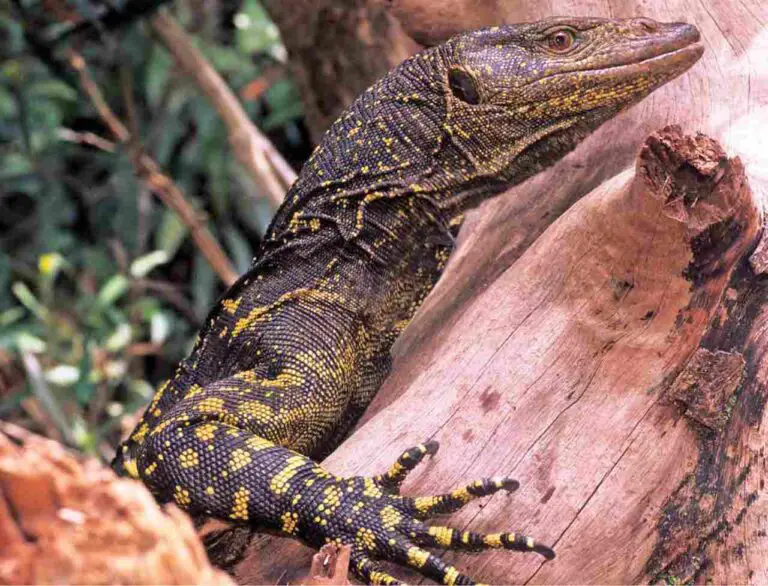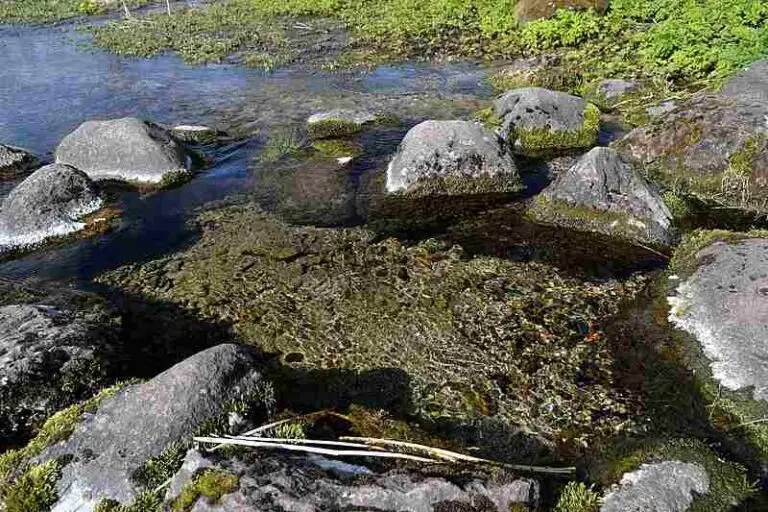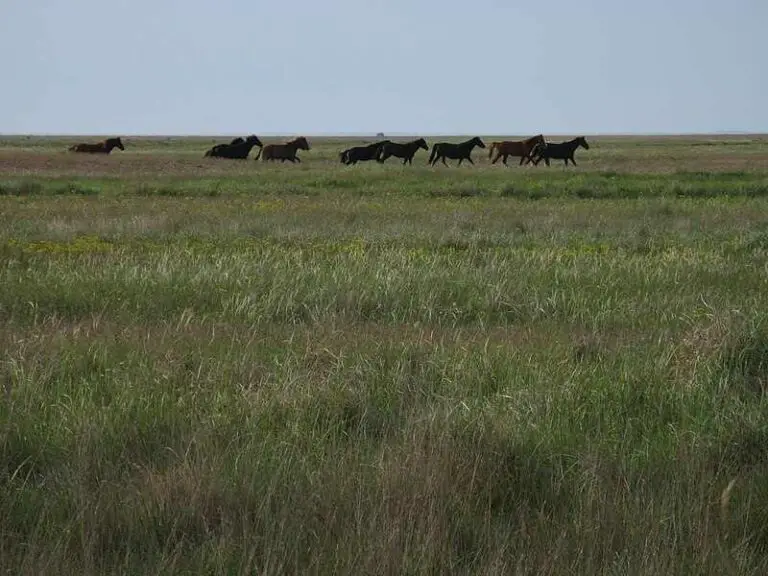13 Practices of Sustainable Agriculture Explained
Practices of sustainable agriculture are urban agriculture, biodynamic farming, crop rotation, no-till farming, hydroponics, aquaponics, cover cropping, landscape management, integrated pest and weed management, integrated crop and livestock management, organic farming and biofuel usage.
The practices of sustainable agriculture can otherwise be referred to as methods of sustainable agriculture, and they represent the basic, individual techniques and applications that are involved in sustainable agriculture.
Practices of sustainable agriculture are different from the elements of sustainable agriculture which indicate the main areas of interest that make up the concept and practice of sustainable agriculture.
These practices are discussed as follows;
1). Urban Agriculture as one of the Practices of Sustainable Agriculture
Urban agriculture refers to the concept of carrying out agricultural activities like crop cultivation, livestock rearing, processing, and distribution; within the boundaries of an urban region.
Major global issues such as deforestation, urbanization, environmental degradation and overpopulation, have all increased the importance of urban agriculture as one of the most crucial and common practices of sustainable agriculture.
The primary objective of urban agriculture is to ensure that agricultural production is performed locally within the vicinity of the ever-increasing urban area [2]. This is a step in the direction of sustainable development, since agriculture itself plays a role in the economy, environment, and society.
By localizing agricultural projects in urban areas, residents in such areas are able to both participate and benefit directly from the efforts to diversify supply sources and to address food insecurity and world hunger.
There are several benefits of urban agriculture. One of these is the reduction of living expenses for urban residents, especially in the area of agricultural products like food [18]. Some of these residents may become employed in agricultural projects.
The environment also tends to improve in cities when urban agriculture is practiced extensively. This may in the area of air quality which may improve with crop cultivation and oxygen production.
Soil conservation and land management practices in the course of agriculture may improve the quality of land in urban areas. Water quality, supply and management may all improve through measures such as construction of water dams. These dams may serve other purposes such as generation of hydroelectricity.
Energy conservation is yet another benefit of urban agriculture. This is because when agricultural projects are carried out in urban areas, energy expenditure and losses which typically occur in the process of transporting agricultural products over long distances (for both processing and distribution) are mitigated.
Because it is itself a broad concept, there are various techniques and methods involved in urban agriculture. These techniques are mostly designed to conserve resources like space and energy, and include indoor and outdoor farming approaches.

2). Biodynamic Farming as one of the Practices of Sustainable Agriculture
Biodynamic farming is a unique agricultural approach whereby a farm is nurtured and managed as a unified, living organism [16].
The philosophy and principle behind biodynamic farming is known as Anthroposophy [11]. It is based on a mystical concept and religious movement, founded by Austrian scientific philosopher Rudolf Steiner in 1924, with the theme of achieving a deep knowledge and understanding of the dynamics of human nature [10].
Biodynamic farming is a very effective practice, because it views the various processes, products, materials and methods on a farm or project, to be individual components of a unified organism. Each of these ‘components’ must be well cared for, both on an individual and collective level, in order for the organism (the farm) to function effectively.
According to the perspective and approach described above, biodynamic farming treats the farm itself as an ecosystem, where the soil, water, crops, livestock and other elements represent the biotic and abiotic components. These components are handled in such a manner that ensures their growth, without compromising the growth and productivity of other components.
It is not uncommon for biodynamic farming to be categorized as a type of organic farming. This is because of the effort to harmonize agricultural factors with natural factors in this type of farming. Geochemical cycles like carbon, nitrogen and water cycles, as well as ecologic hierarchies like the energy pyramid are all brought to harmony with the growing schedules, species, materials and methods used in biodynamic farms.
Biodynamic farming shares some benefits with other practices of sustainable agriculture like cover cropping, organic farming and no-till farming. This is because it is a conservative and self-sustaining approach.
Advantages of biodynamic farming are improved soil fertility, resilience, growth, sustainability and productivity, with less use of harmful methods and materials like chemical fertilizers, pesticides and herbicides.
Composting is commonly practiced in biodynamic farming [5]. This ensures that agricultural waste on the farm does not become hazardous but is rather put to use as a soil amendment. It also mitigates the potential impact of biodegradation on the farm and the external environment.
Other measures like complementary cropping, crop rotation and mulching may also be practiced in order to optimize productivity.
The major drawbacks of biodynamic farming are labor-intensity and relatively-high cost.

3). Crop Rotation as one of the Practices of Sustainable Agriculture
Crop rotation is the sequential or successive planting of multiple crop species on a given agricultural land over a given period of time [8].
It is one of the aspects of polyculture, which itself is an element of sustainable farming.
As a sustainable agricultural practice, crop rotation has numerous benefits. When crops are rotated in a sequence, soil fertility is optimized, because the different crop species complement each other in their mode of absorbing and sequestering soil nutrients.
Weeds, pest and diseases are also mitigated through crop rotation, because their natural growth cycles are continuously interrupted by changes in crop species, making it impossible for them to survive over a long period [21].
Crop rotation also leads to long-term agricultural biodiversity, which is essential for economic resilience in the agricultural sector, and for reliability in food supply. Hazards like soil erosion are also mitigated by crop rotation when cover crops are included in the rotation sequence.
4). No-Till Farming Practices
No-till (also no till, no-tillage or zero tillage) farming is a sustainable agricultural practice whereby crops are cultivated with little to no mechanical disturbance of the soil [14]. The goal in no-till farming is to minimize all forms of disturbance of the soil during cultivation.
There are various alternative techniques that are applied to achieve this goal.
One of these is the use of narrow trenches or holes in the ground [4]. These trenches or holes are usually dug or drilled in the exact spot where sowing will occur, so as to prevent any further mechanical disturbance.
Compost material or crop residue can also be used to make mounds in which crops are sown. While this is technically easier than using holes and narrow trenches, it is not a good option for crops that are highly-demanding in terms of their root system and nutritional needs.
No-till farming is a typical and effective method of soil conservation. As one of the practices of sustainable agriculture, it has potential benefits.
One of these benefits is with respect to the environment. With no-till farming; soil, water and atmospheric health can all be optimized.
Soil health is optimized because minimal mechanical disturbance allows soil to maintain its structure, moisture and mineral composition. This mitigates the risk of such problems as erosion and leaching.
Greenhouse emissions of sequestered carbon or gases from soil processes is also reduced, thereby protecting the atmosphere and environment from some effects of global warming and climate change, such as heatwave events and droughts that can reduce agricultural productivity.
Surface runoff that may wash fertilized chemicals into water bodies is also mitigated by practicing no-till farming.
5). Hydroponics and Aquaponics as Practices of Sustainable Agriculture
Hydroponics and aquaponics are practices of sustainable agriculture which are both concerned with conserving land resources by minimizing the use of soil and water in crop cultivation [6].
Although both concepts and terms are often interchanged, they differ in meaning and application. The difference between hydroponics and aquaponic lies in the source of nutrients for plants, which comes from formulated supplements in hydroponics and from aquatic organisms in aquaponics.
Both hydroponics and aquaponics are soil-less agricultural practices, meaning that these methods do not require the structural and mineralogical support of soil to grow plants.
In hydroponics, plants are grown by immersing their roots in a solution comprising of specialized minerals or nutrients that have been dissolved in water [17]. Structural support is then provided by other means such as using gravels.
On the other hand, in aquaponics, the plants are also grown by immersing their roots in water, but derive their nutrients from fish (and other aquatic organisms) that co-habit with the plants [19].
The idea behind aquaponics is to create a self-sustaining aquatic ecosystem where plants do not require external nutrient supply to survive. A common means by which these plants derive their nutrients is from the byproducts of biological activities of the aquatic organisms such as feeding and excretion.
As sustainable agricultural practices, hydroponics and aquaponics both have the advantage of being useful tools for soil and land conservation, especially in cases where these resources are scarce or in high demand.
They are both useful for controlled cultivation of some low-demand plant species, and are often associated with high productivity and yield.

Practices of Sustainable Agriculture: Hydroponics and Aquaponics (Credit: Narek75 2017 .CC BY-SA 4.0.)
6). Cover Cropping as one of the Practices of Sustainable Agriculture
Cover cropping is the cultivation is specific crops on agricultural land for the purpose of protecting, conserving and improving the soil.
This is a common agricultural practice which shares several advantages with other practices of sustainable agriculture.
By forming a canopy over soil, cover crops protect the soil from the effects of unfavorable environmental conditions, such as erosion [20]. Heavy precipitation and stormwater runoff are unable to make direct contact with a large surface area of the soil.
Cover crops boost soil fertility in various ways. One of these is by mitigating leaching. Another is by enhancing the effectiveness and rate of healthy soil processes and organisms.
Cover crops enable useful organic matter to accumulate on soil. The dead parts of these crops may also become manure and be assimilated into the soil mineral composition through the process of biodegradation. As a result of these mechanisms, artificial fertilizers become less needed and compost becomes available.
During the period of their growth, cover crops prevent the survival of weeds [7]. This is because of their rapid growth and competitive characteristics.
Pests and diseases are also controlled when cover crops are included in the sequence of crop rotation on an agricultural land. This is because the pests and diseases are out-competed by the rapid growth and resilience of cover crops.
Some cover crops may also help trap and store mineral nutrients in the soil. Examples of cover crops are cowpea, buckwheat, vetch, rye, Sudan grass, clovers and radish.
7). Landscape Management as one of the Practices of Sustainable Agriculture
Landscape management (or integrated landscape management; ILM) refers to all techniques and practices that are applied in order to maintain, protect and improve the quality of large expanses of land.
Although landscape management is commonly practiced for ornamental and aesthetic purposes, it is also a useful approach to overall land resource conservation.
Landscape management is categorized as a practice of sustainable agriculture because it involves the careful maintenance of landscape vegetation and soil, to boost fertility and productivity, while mitigating environmental degradation [13].
It is related to other disciplines and practices like urban development and urban agriculture. In these areas, landscape management is used to plan, manage and maintain human interference with the natural ecosystem in terms of deforestation, construction, industry and transport.
8). Integrated Pest, Disease and Weed Management
Pests, diseases and weeds are three of the most common and serious problems encountered in agriculture.
Integrated pest, disease and weed management is a practice that is designed to make use of the most sustainable methods to mitigate these problems in agricultural lands and projects.
A major objective here is to reduce the use of potentially harmful chemicals in crop cultivation and agricultural management.
To achieve this, integrated pest, disease and weed management is known to utilize a combination of elements and techniques that are environment-friendly and effective.
Natural control measures are usually taken. These measures, collectively known as biological control, involve the use of organisms, organic processes and materials, to address agricultural problems.
For example, pests and weeds are controlled biologically by plants and animals into the farm, that naturally prey upon or out-compete the pests and weeds. The same approach is applied for crop and livestock diseases.
Chemical remedy is sometimes used in integrated management. The key objective is to ensure that the control of these problems does not compromise the sustainability of agriculture by causing depletion or degradation of any form.
It is important to note that crop rotation, cover cropping and other applicable practices can be used in integrated management.
9). Integrated Crop-Livestock System (ICLS)
Integrated Crop-Livestock System (ICLS) is a system and practice of sustainable agriculture that involves the synergic or symbiotic cultivation of crops and rearing of livestock in a manner that aligns with environmental and ecologic conditions.
It is an aspect of polyculture and mixed farming, and the goal in ICLS is to optimize crop and livestock productivity both individually and as components of a single agricultural unit.
A typical example of ICLS is a scenario where feed for livestock is cultivated and derived from the farm in which they are reared, while the agricultural soil is fertilized using waste biomass or manure from the livestock.
Grazing of livestock on cover crops and agricultural residue is a fairly common practice in ICLS [15]. When practiced optimally, this approach is effective for boosting overall yield.
10). Organic Farming as one of the Practices of Sustainable Agriculture
As the name implies, organic farming (OF) is an agricultural approach that makes use of mostly natural or organic materials and processes to grow crops and livestock.
This means that in organic farming, efforts are made to minimize the use of synthetic or artificial materials and methods [9].
Attributes of organic farming can be observed in other practices of sustainable agriculture, such as biodynamic farming and integrated crop-livestock system (ICLS).
Like these practices, the aim of organic farming is to make agriculture sustainable by adopting an approach that is friendly to the environment and which aligns with environment conditions and geochemical cycles.
Organic farming seeks to minimize human interruption of natural ecologic processes by reducing mechanized and extensive tillage, chemical control of pests and diseases, and chemical fertilization of soil.
In place of these human-induced interruptions, organic farming encourages more natural processes of organic matter accumulation, biodegradation and compost formation, soil enrichment and organic activity.
When it is practiced optimally, crops and livestock produced on organic farms are healthier than their counterparts produced with the help of synthetic materials and methods.
11). Biofuel Usage as one of the Practices of Sustainable Agriculture
The production and usage of biofuel in the context of agriculture, is a sustainable approach to agricultural development.
Biofuel is derived from biomass or organic matter, which is produced abundantly in agriculture. When biofuels are burnt, they release bioenergy, which is a form of renewable energy that is more easily accessible than fossil fuels or nuclear energy.
Various techniques can be used to produce biofuel from organic matter, including anaerobic digestion and pyrolysis. The biofuels themselves may occur as solid, liquid or gas, with examples such as firewood, ethanol, and biogas [3].
Biofuel can be used to achieve energy efficiency and energy conservation in the agricultural sector, when it is made to serve energy supply purposes (heating, lighting, mechanized farming, processing) and to reduce the dependence on non-renewable energy sources.
The use of biofuels is beneficial to the environment, as these fuels typically produce less greenhouse emissions and toxic byproducts [1].
12). Adaptive Farming as one of the Elements of Sustainable Agriculture
Adaptive farming or adaptive agriculture is a type of agriculture whereby all methods, materials and products are selected with due consideration of the constantly changing nature of climatic and environmental conditions.
In order for adaptive farming to be effective, the environmental conditions and the historical trend of changes must be understood. Based on this understanding, suitable methods, crops and livestock may them be selected.
The ultimate goal is to ensure that agricultural productivity is not limited by environmental changes.
13). Sustainable Irrigation System
Sustainable irrigation systems make use of conservative methods to supply water to farms for soil moisturizing and crop growth.
The two objectives of sustainable irrigation are water conservation and to maximize the areal reach of irrigation water.
One of the most common and effective methods of sustainable irrigation is referred to as drip irrigation [12].
As the name implies, this method involves the use of pumps, conduits and nozzles to distribute water by a drip mechanism, across agricultural land. In relation to conventional methods, drip irrigation is estimated to conserve 20-40% more water while effectively covering 20-50% more land area.

Conclusion
Practices of sustainable agriculture are;
- Urban Agriculture
- Biodynamic Farming
- Crop Rotation
- No-Till Farming Practices
- Hydroponics and Aquaponics
- Cover Cropping
- Landscape Management
- Integrated Pest, Disease and Weed Management
- Integrated Crop-Livestock System (ICLS)
- Organic Farming
- Biofuel Usage
- Adaptive Farming
- Sustainable Irrigation System
References
1). Cheteni, P. (2017). “Sustainable development: biofuels in agriculture.” Environmental Economics 8(2):83-91. Available at: https://doi.org/10.21511/ee.08(2).2017.09. (Accessed 14 July 2022).
2). Clerino, P.; Fague-Lelievre, A. (2020). “Formalizing Objectives and Criteria for Urban Agriculture Sustainability with a Participatory Approach.” Sustainability 12(18). Available at: https://doi.org/10.3390/su12187503. (Accessed 15 July 2022).
3). Datta, A.; Hossain, A.; Roy, S. (2019). “An Overview on Biofuels and Their Advantages and Disadvantages.” Asian Journal of Chemistry 31(8). Available at: https://doi.org/10.14233/ajchem.2019.22098. (Accessed 15 July 2022).
4). Derpsch, R. (2008). “No-tillage and conservation agriculture: A progress report.” Available at: https://www.researchgate.net/publication/284459787_No-tillage_and_conservation_agriculture_A_progress_report. (Accessed 15 July 2022).
5). Gautam, P.; Lal, B.; Rana, R. (2014). “Biodynamic Farming- An Occult Form of Organic Farming.” Available at: https://www.researchgate.net/publication/265378734_Biodynamic_Farming-_An_Occult_Form_of_Organic_Farming. (Accessed 15 July 2022).
6). Joyce, A.; Goddek, S.; Kotzen, B.; Wuertz, S. (2019). “Aquaponics: Closing the Cycle on Limited Water, Land and Nutrient Resources.” Aquaponics Food Production Systems (pp.19-34). Available at: https://doi.org/10.1007/978-3-030-15943-6_2. (Accessed 15 July 2022).
7). Lemessa, F. (2015). “Cover Crops as a Means of Ecological Weed Management in Agroecosystems.” Journal of Crop Science and Biotechnology 18(2):133-145. Available at: https://doi.org/10.1007/s12892-014-0085-2. (Accessed 15 July 2022).
8). Leteinturier, B.; Herman, J. L.; De Longueville, F.; Quintin, L.; Oger, R. (2006). “Adaptation of a crop sequence indicator based on a land parcel management system.” Agriculture Ecosystems & Environment 112(4):324-334. Available at: https://doi.org/10.1016/j.agee.2005.07.011. (Accessed 15 July 2022).
9). Meena, H. P. (2014). “Organic Farming: Concept and Components.” Available at: https://www.researchgate.net/publication/259810628_Organic_Farming_Concept_and_Components. (Accessed 15 July 2022).
10). Paull, J. (2011). “Attending the First Organic Agriculture Course: Rudolf Steiner’s Agriculture Course at Koberwitz, 1924.” Available at: https://www.researchgate.net/publication/228504313_Attending_the_First_Organic_Agriculture_Course_Rudolf_Steiner’s_Agriculture_Course_at_Koberwitz_1924. (Accessed 15 July 2022).
11). Paull, J.; Steiner, R.; Kaufmann, G.; Kolisko, L.; Pease. M. (2020). “The Pioneers of Biodynamics in Great Britain: From Anthroposophic Farming to Organic Agriculture (1924-1940).” Available at: https://www.researchgate.net/publication/340574237_The_Pioneers_of_Biodynamics_in_Great_Britain_From_Anthroposophic_Farming_to_Organic_Agriculture_1924-1940. (Accessed 15 July 2022).
12). Ranjan, S.; Sow, S. (2020). “Drip Irrigation System for Sustainable Agriculture.” Available at: https://www.researchgate.net/publication/349318979_Drip_Irrigation_System_for_Sustainable_Agriculture. (Accessed 15 July 2022).
13). Recha, J. (2014). “Sustainable Agriculture Land Management Practices for Climate Change Mitigation.” Available at: https://www.researchgate.net/publication/283731434_Sustainable_Agriculture_Land_Management_Practices_for_Climate_Change_Mitigation. (Accessed 15 July 2022).
14). Reicosky, D. (2020). “No-Till Farming Systems for Sustaining Soil Health.” No-till Farming Systems for Sustainable Agriculture, Challenges and Opportunities (pp.619-631). Available at: https://doi.org/10.1007/978-3-030-46409-7_34. (Accessed 15 July 2022).
15). Ribeiro, R. H.; Ibarr, M.; Bratti, F.; Dieckow, J. (2021). “Integrated crop-livestock systems on SOC sequestration in subtropical Brazil.” Recarbonizing Global Soils – A technical manual of recommended sustainable soil management. Volume 4: Cropland, grassland, integrated systems and farming approaches – Case studies (pp.385-403), FAO. Available at: https://www.researchgate.net/publication/354601615_Integrated_crop-livestock_systems_on_SOC_sequestration_in_subtropical_Brazil. (Accessed 15 July 2022).
16). Sajeesh, P. K.; Jagdish, J. (2012). “Biodynamic Farming: A Way to Sustainable Agriculture.” Available at: https://www.researchgate.net/publication/317598427_Biodynamic_Farming_A_Way_to_Sustainable_Agriculture. (Accessed 15 July 2022).
17). Sharma, N.; Acharya, S.; Kumar, K.; Singh, N.; Chaurasia, O. P. (2019). “Hydroponics as an advanced technique for vegetable production: An overview.” Journal of Soil and Water Conservation 17(4):364-371. Available at: https://doi.org/10.5958/2455-7145.2018.00056.5. (Accessed 15 July 2022).
18). Siegner, A.; Sowerwine, J.; Acey, C. (2018). “Does Urban Agriculture Improve Food Security? Examining the Nexus of Food Access and Distribution of Urban Produced Foods in the United States: A Systematic Review.” Sustainability 10(9):2988. Available at: https://doi.org/10.3390/su10092988. (Accessed 15 July 2022).
19). Simionov, I.; Cristea, V.; Petrea, S. M.; Nicoara, M.; Strungaru, S. (2019). “AQUAPONICS AWARENESS: A MODERN APPROACH FOR LIMITING THE AQUACULTURE ENVIRONMENTAL IMPACT AND IMPROVING THE PRODUCTIVITY.” Available at: https://www.researchgate.net/publication/330354430_AQUAPONICS_AWARENESS_A_MODERN_APPROACH_FOR_LIMITING_THE_AQUACULTURE_ENVIRONMENTAL_IMPACT_AND_IMPROVING_THE_PRODUCTIVITY. (Accessed 15 July 2022).
20). Sumiahadi, A.; Acar, R.; Koyun, N. K.; Özel, A. (2019). “The Potential Use of Cover Crops for Controlling Soil Erosion Caused by Water.” 10th International Soil Congress 2019 – Successful Transformation toward Land Degradation Neutrality: Future Perspective, Ankara, Turkey. Available at: https://www.researchgate.net/publication/334119687_The_Potential_Use_of_Cover_Crops_for_Controlling_Soil_Erosion_Caused_by_Water. (Accessed 15 July 2022).
21). Zohry, A. E. A.; Ouda, S. A. (2018). “Crop Rotation Defeats Pests and Weeds: An Approach to Secure Future Food.” Crop Rotation (pp.77-88). Available at: https://doi.org/10.1007/978-3-030-05351-2_5. (Accessed 15 July 2022).




